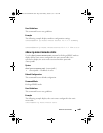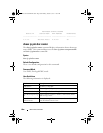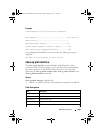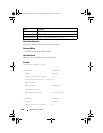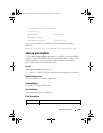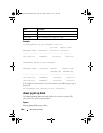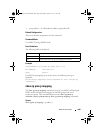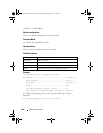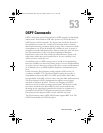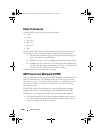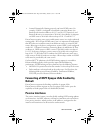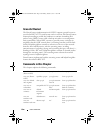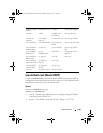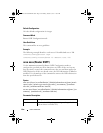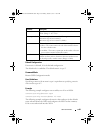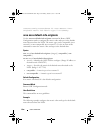
OSPF Commands 1097
53
OSPF Commands
OSPF is a link-state protocol. PowerConnect OSPF supports variable-length
subnet masks. PowerConnect OSPF only operates over VLAN interfaces.
OSPF operates within a hierarchy. The largest entity within the hierarchy is
the autonomous system (AS), a collection of networks under a common
administration sharing a common routing strategy. This is sometimes called a
routing domain. An AS can be divided into a number of areas or groups of
contiguous networks and attached hosts. Routers within the same area share
the same information, so they have identical topological databases.
Information is sent in the form of link-state advertisements (LSAs) to all
other routers within the same hierarchical area. An area's topology is not
visible to routers outside the area.
Two different types of OSPF routing occur as a result of area partitioning:
Intra-area and Inter-area. Intra-area routing occurs if a source and destination
are in the same area. Inter-area routing occurs when a source and destination
are in different areas. An OSPF backbone distributes information between
areas.
For IPv4 networks, PowerConnect routing supports OSPF version 2 in
accordance with RFC 2328. The PowerConnect routing also provides a
compatibility mode for the RFC 1583 OSPF specification, which allows
interoperability with OSPF version 2 routers using the older implementation.
The PowerConnect OSFPv2 implementation supports point-to-point
operation on Ethernet interfaces. The user can configure an OSPFv2
interface to run in broadcast or point-to-point mode. When there are only
two routers attached to the link, OSPFv2 point-to-point mode has the
advantage of not requiring designated router election or origination of a
network LSA for the LAN. This makes the protocol more efficient.
PowerConnect also supports OSPFv3 for use with IPv6 networks.
The PowerConnect routing OSPF NSSA feature supports RFC 3101, The
OSPF Not-So-Stubby Area (NSSA) Option.
2CSPC4.XCT-SWUM2XX1.book Page 1097 Monday, October 3, 2011 11:05 AM



